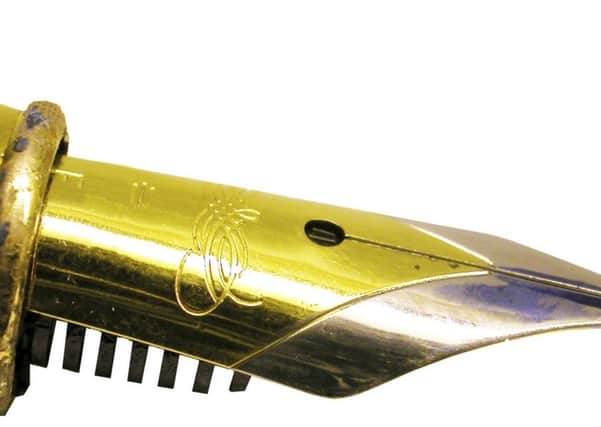Collector’s item: all about ink wells


Here at the centre we are often reminded of school days past, by the many different items we see. Desks, writing boxes, pens, pencils and even uniforms are collectable and snapped up quickly. Even teachers’ canes are collectable, but that’s not for me, I’ll leave that for someone else to dabble with!
One very popular field of collectables within this theme is Inkwells. Inkwells appear as early as ancient Chinese and Egyptian times, and almost any authentic inkwell will have an interesting story.
Advertisement
Hide AdAdvertisement
Hide AdThey were even used to sign the Declaration of Independence, the Bill of Rights and the peace treaties that ended World War II. So collecting them does give you a piece of history, too, if you’re lucky enough to find the right one!


Crafted from a variety of materials, styles, colours and shapes, including animals, birds, buildings and shoes, it was usually the wealthy who owned inkwells while common folk dipped their pens straight into the ink bottle.
Inkwells were a representation of status for affluent businessmen who liked ornate inkwells on their desks. Silver inkwells began to replace those made of wood, bone, leather or porcelain in the 1800s.
The decline of the inkwell began with the invention of the fountain pen in 1884, which not only carried its own supply of ink, but the ink was produced in a standard, controllable flow.
Advertisement
Hide AdAdvertisement
Hide AdThe most expensive fountain pen was bought for an amazing $218,000 by a Japanese collector in 1988. It was made by the French company Redfen, took a team of skilled craftsmen a year to make and had emeralds, amethysts, rubies, sapphires and onyx encrusted onto it.
Collecting inkwells, pens and pencils is popular, simply because they don’t take up much space to house and a collection can be grown quickly and cheaply.
They are usually lovely to look at and fit into a small space!